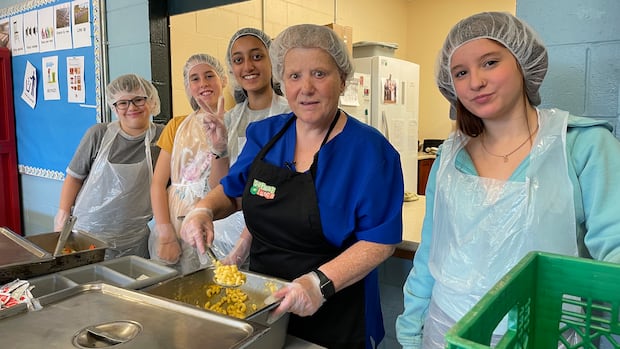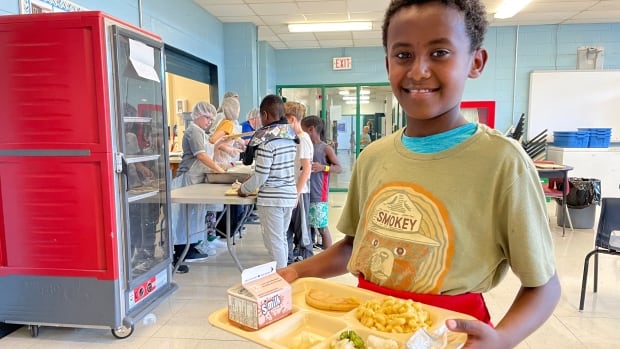
By 8 a.m. — as most people begin weekday morning routines or sit down for breakfast — Debbie Marshall’s already got pots heating on the stove and meat thawing, and is prepping fruit and veggies. Every morning, from an apartment-sized school kitchen in St. John’s, she whips up healthy, hot lunches daily for anywhere from 140 to 200 elementary students.
A head cook and server for Newfoundland and Labrador’s School Lunch Association (SLA) who started out as a volunteer nearly 20 years ago when her kids were in kindergarten, Marshall knows the value of every tray of mac and cheese, pancakes, goulash or lasagna that she and her student helpers serve up during the 45-minute lunch rush.
“In Newfoundland, we’re a rich province, but in another way, we’re a poor province. We have a lot of people here struggling…. So at least when [kids] come in, the parents know their children are getting their lunches each and every day,” Marshall said.
In the spring, the federal government unveiled $1 billion over five years to fund Canada’s first national school food program. Newfoundland and Labrador became the first province to officially sign on. We check in on a program, and find out how the funding will help increase their reach.
“They always know if they need a little bit extra, they can come to me,” she said. “If a child hasn’t got a full belly, they’re not going to be able to learn in school.”
Six months after the federal government unveiled $1 billion to fund Canada’s first national school food program and a month after the first jurisdiction — Newfoundland and Labrador — officially signed on, CBC News checked in with food providers about what they’re facing this school year.
School Lunch Association, St. John’s

Serving more than 6,700 meals daily in 43 schools in Newfoundland and Labrador, the long-running SLA operates on a pay-what-you-can model that’s since been emulated by neighbouring provinces. Families opt to pay fully for their children’s participation, a partial fee or nothing at all if money is tight.
Financial support from the provincial government, individual and corporate donors and fundraisers has helped cover the difference, but in recent years that gap has widened, said SLA executive director John Finn.
“With the amount of families’ ability to pay decreasing and the cost of food increasing, it was a bit of a double-edged sword,” he said.
The SLA has a solid waitlist of schools that want to sign on, but expansion has been held back, Finn said. The province’s more than 250 schools are spread out across a wide geographic area (including many rural and remote regions), and aging or missing infrastructure — think 50-year-old cafeteria kitchens with out-of-date ventilation or lacking commercial refrigeration — require attention first.
School food providers await details of just how Newfoundland’s $9.1 million in federal funding over three years will be distributed, but the SLA and its peers have already been advising provincial authorities on where help is needed most.
“[We’re] looking at high socioeconomic needs, areas where there is a huge demand for a program, in which perhaps there was no other food provider in schools,” Finn said, noting that across Canada, many providers have left because it’s no longer financially sustainable to operate.
“It’s tremendous and great news that the federal government and the province of Newfoundland and Labrador have signed the historic first agreement for a national school food program. But a program such as ours is only going to be sustainable as long as families and others continue to contribute toward it.”
Nourish Cowichan, Duncan, B.C.
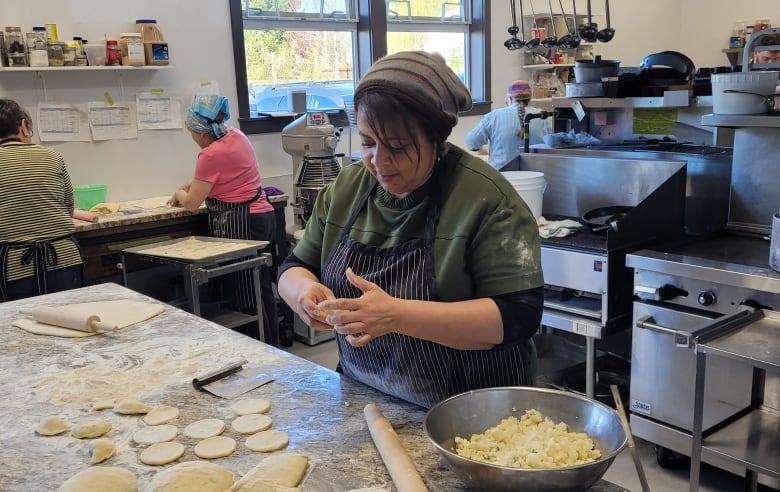
Although British Columbia hasn’t yet signed an agreement to receive the federal funding, the province’s $214-million pledge over three years to support school food is moving through the system. Provincial funding made up half of Nourish Cowichan’s $1.2-million budget, said Fatima Da Silva, co-founder and executive director.
“I cannot tell you have much pressure it has taken off our shoulders,” she said.
In less than a decade, Nourish Cowichan has grown from a grassroots movement in one school to offering meals for 23 schools in the Cowichan Valley School District, serving more than 700,000 meals — between breakfast, lunch, snacks and/or weekend food bundles — last year.
Provincial funding also meant other districts began reaching out for help to overhaul their school food offerings, given Nourish Cowichan’s success in building an initiative powered by enthusiastic engagement from an army of volunteers.

A trio of staffers supervise about 70 to 80 hands-on volunteers — students, educators and community members — as they secure food donations, garden, prep food in a central kitchen, make delivery runs and distribute healthy, restaurant-worthy meals to kids.
Da Silva sings the praises of community members who happily process pickup trucks full of donated zucchinis, apples and squashes over weekends and a volunteer who on one occasion drove hours out of his way to maintain his delivery schedule, describing students’ faces lighting up as the best part of his week.
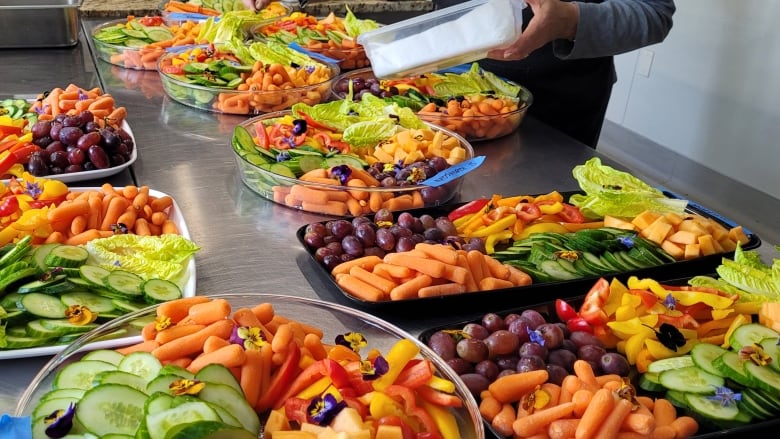
Federal money will indeed help the sector, but it would only cover urgent needs, Da Silva said, such as schools on hold for existing programs. She said a universal school food program from across Canada will take more time and investment.
“I don’t really believe that we can get to that place where we start looking at universal food programs until we all have better, level distribution in every single district,” she said. “Let’s bring everybody up to the same level we are … because from there we can start talking about a universal food program.”
Niagara Nutrition Partners, St. Catharines, Ont.

In Ontario, where about 40 per cent of Canada’s K-12 students live, cost increases in food, equipment and delivery — coupled with skyrocketing demand in schools — have meant school food programs are more difficult to maintain than ever, said Jessica Stephenson, program manager for Niagara Nutrition Partners.
Aided by front-line volunteers Stephenson calls “hunger heroes,” the group supports breakfast, lunch and snack programs for 24,000 students across 201 schools in Niagara Region.
More principals are requesting help, Stephenson said from St. Catharines, Ont. One principal had 140 students requiring food support turn up on short notice, while others with existing programs have seen an influx of kids who didn’t need support in the past but now do. Meanwhile, financial strain forced Niagara Nutrition Partners to shutter 13 programs early last year.
Without federal support or a funding boost from the province soon, she said, her program and others in Ontario could again struggle to make it through this school year.
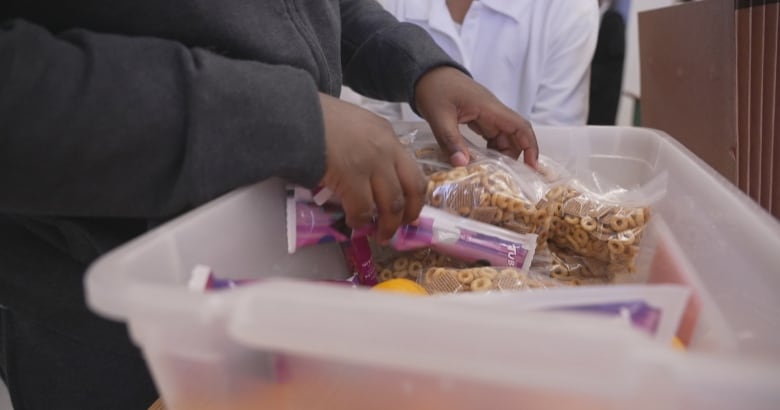
“We in the non-profit world are really good at stretching funds and budgeting and cutting corners where we can, but, truly, feeding kids is not the place to be doing that. And we’ve already done it to the extreme,” Stephenson said.
“This is a non-partisan issue. Feeding kids is a no-brainer.”
Coalition for Healthy School Food

Debbie Field, national co-ordinator of the Coalition for Healthy School Food, sees this moment as a watershed for Canada.
Noting that Ontario and Saskatchewan need better funding, she praised recent boosts to school food programs made by the Nova Scotia, Newfoundland and Labrador, Manitoba and B.C. governments — and she remains optimistic that all provinces and territories will move quickly to sign up for the federal funding. Field said she expects money to reach existing programs before the end of this school year.
There’s been a growing movement globally, Field said, with free school lunch programs in cities from New York and London to Seoul and Berlin. Toronto shared plans to expand its offering last month.
“There hasn’t been a moment like this that we have seen,” she said. “What governments all around the world are realizing is that it is one of their wisest investments, long term.”
